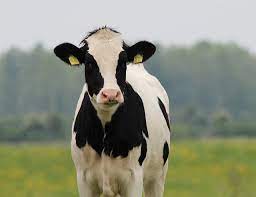A dairy herd in North Carolina has been confirmed to have highly pathogenic avian influenza, commonly known as bird flu, marking the seventh state where such cases have been reported in livestock.
In efforts to control the spread of the virus, the state has implemented a temporary halt on the movement of cattle from Texas, Kansas, and other states where bird flu has been detected in dairy herds. This action is in accordance with directives from the North Carolina Department of Agricultural and Consumer Services. The positive test results were verified by the U.S. Department of Agriculture’s National Veterinary Services Laboratory.
Steve Troxler, the state’s agriculture commissioner, stated, “This is a developing situation, and we await further diagnostic information from NVSL. We are committed to collaborating with our federal partners and dairy farmers in North Carolina.”
Since late March, the U.S. Department of Agriculture has confirmed avian influenza in more than 20 herds as of April 10. Over the weekend, new detections were reported in Michigan and New Mexico.
Additionally, a Texas farmworker, who had close contact with an infected cow, has tested positive for the virus.
Both the USDA and the Food and Drug Administration have assured that there is no risk of avian influenza entering the nation’s milk supply due to stringent regulatory measures and pasteurization, which effectively eliminates the virus. While there have been no reports of the virus in beef cattle, updated federal guidelines recommend that all livestock producers bolster their biosecurity measures during this period.
As theories regarding the transmission of Highly Pathogenic Avian Influenza (HPAI) in cows abound, the official nomenclature for this phenomenon is being established.
Due to the relatively low rates of mortality or morbidity observed in cows infected with avian influenza, an industry association has opted not to directly label the virus as such. The American Association of Bovine Practitioners, in a communication to stakeholders, announced its decision to term the virus affecting dairy herds as “Bovine Influenza A Virus.”
In a letter reported by Meat+Poultry, the industry group emphasized the importance of distinguishing the virus in order to uphold consumer confidence in the safety and availability of beef and dairy products.
As the presence of the H5N1 strain in the nation’s dairy herds raises questions, USDA researchers are narrowing down potential pathways through which the virus may have entered. In a recent meeting, officials highlighted contaminated milk equipment or worker clothing as potential avenues for avian influenza to reach dairy cows.
Evidence indicates that the infections may have originated from a single farm in Texas and subsequently spread through the unknowing movement of affected cattle to farms in other states.
Some experts express concern about ground poultry litter, a byproduct often used as fertilizer on farms, as a possible conduit for the virus. This is because U.S. farmers can utilize it as a feed for their cattle. According to Steve Van Winden, an associate professor in population medicine at the Royal Veterinary College in London, feeding cattle poultry litter is a known risk factor for botulism in cattle and could pose a risk in the case of H5N1.
Despite the increasing number of detections in cattle and a potential human link, the Centers for Disease Control and Prevention (CDC) asserts that the risk of the virus spreading to the general public remains low. The agency recommends that farm workers, who are more susceptible to the virus, wear personal protective equipment when in close proximity to sick or deceased animals.
Andrew Pekosz emphasized the importance of understanding the virus’s spread and genetic sequence changes in a recent interview published by the Johns Hopkins Bloomberg School of Public Health.
Currently, affected cows are undergoing treatment and recovering from avian influenza, and producers are advised against culling entire herds to contain the spread.





